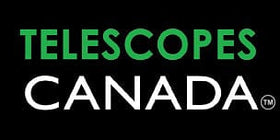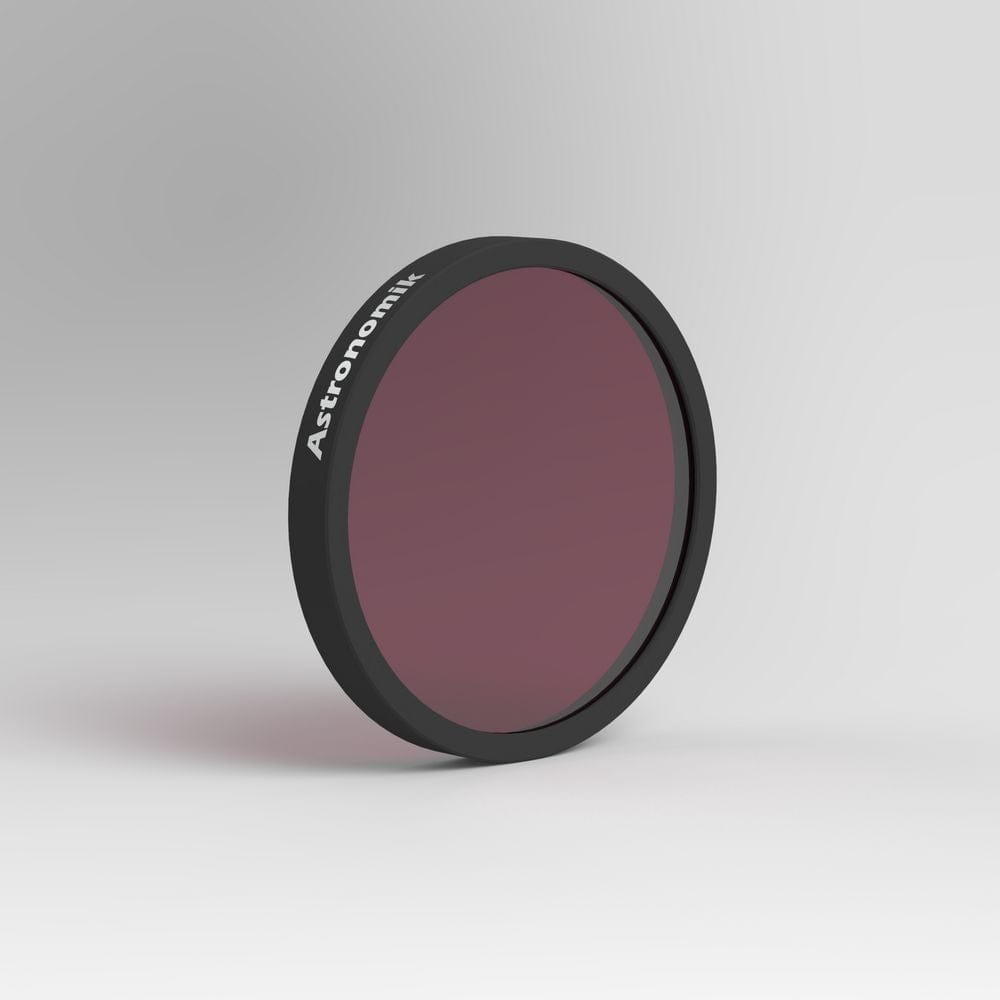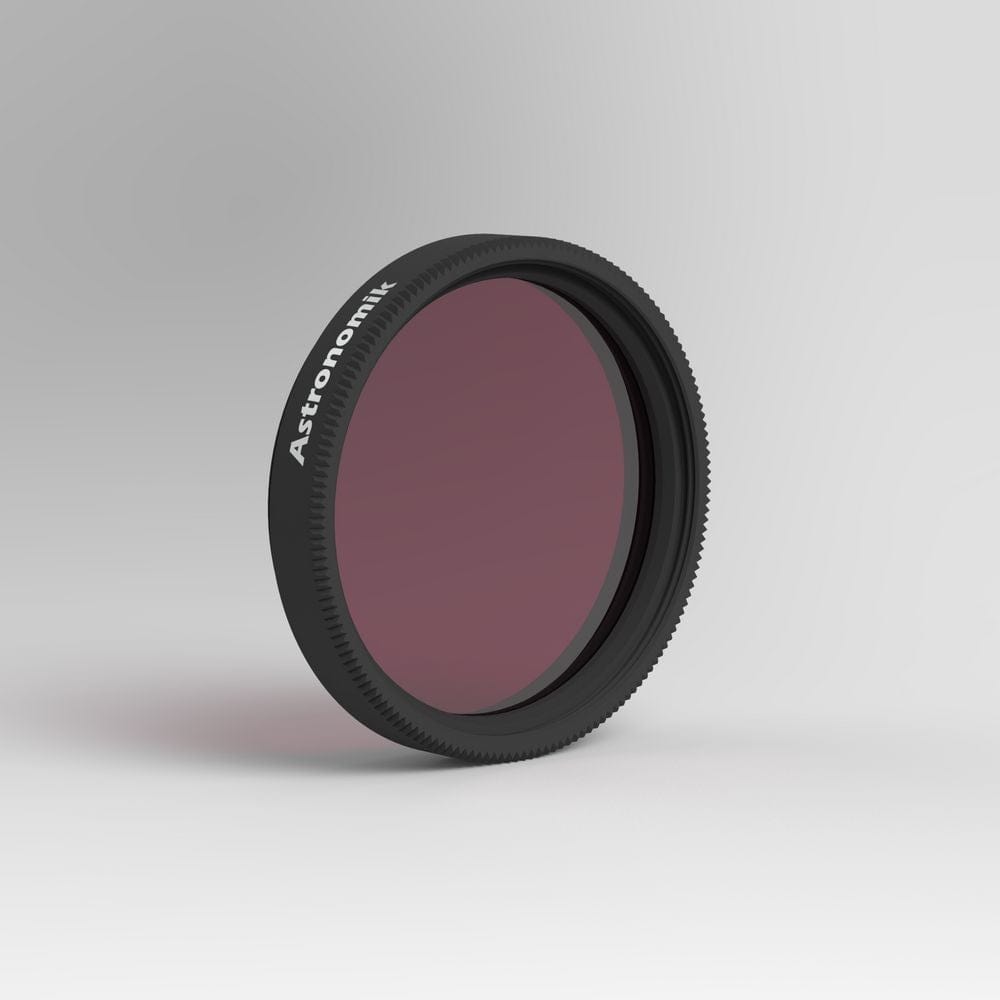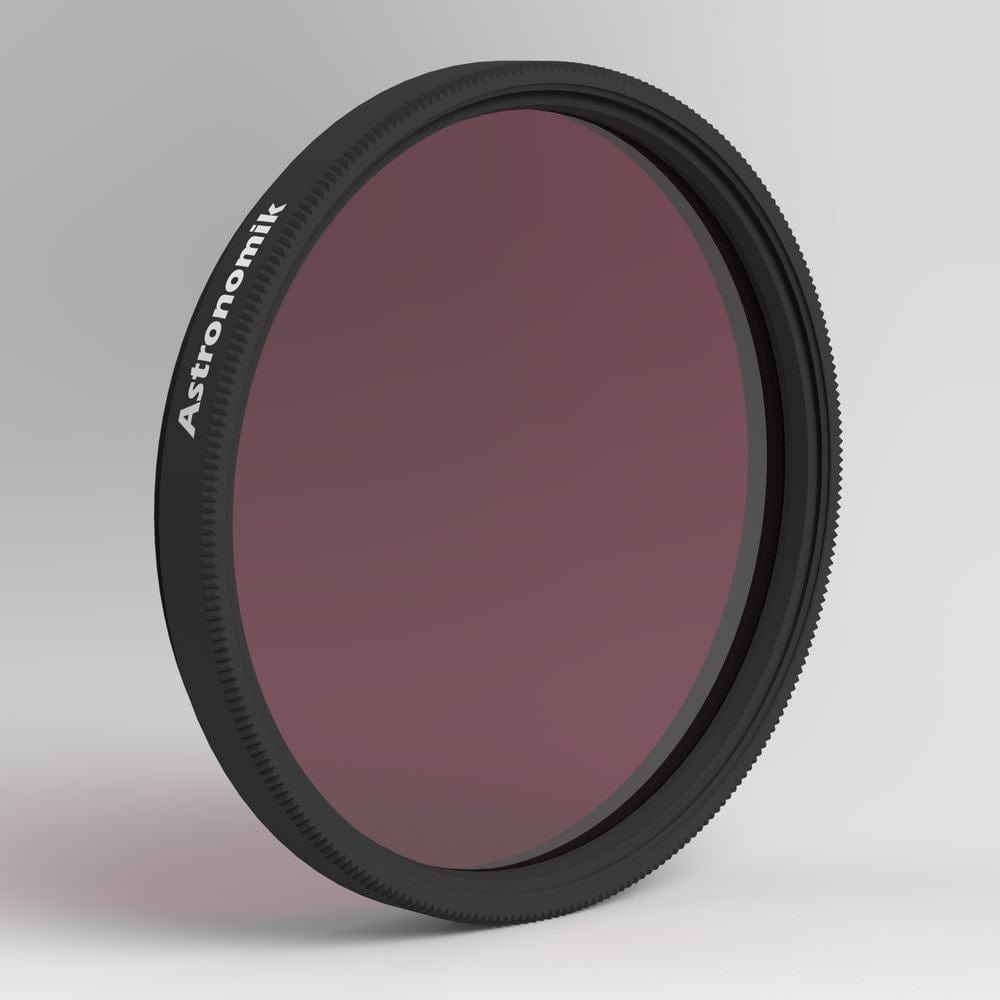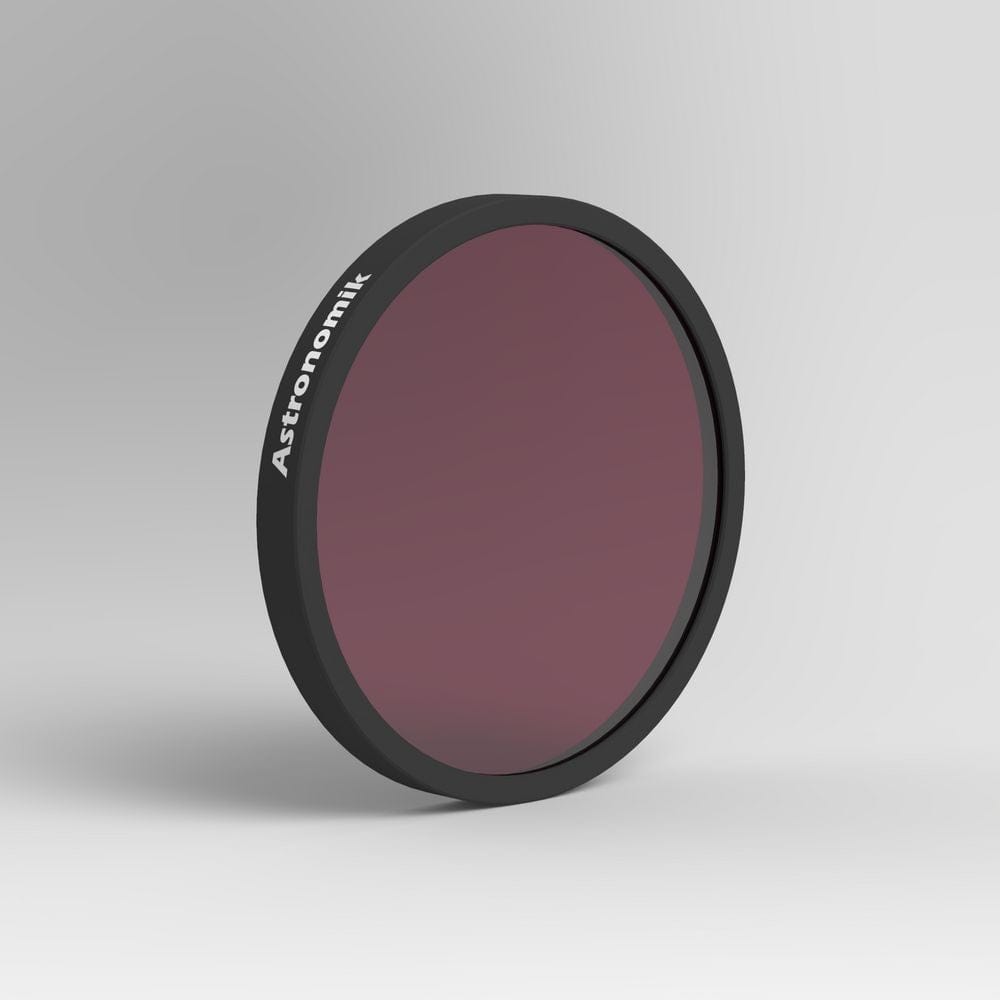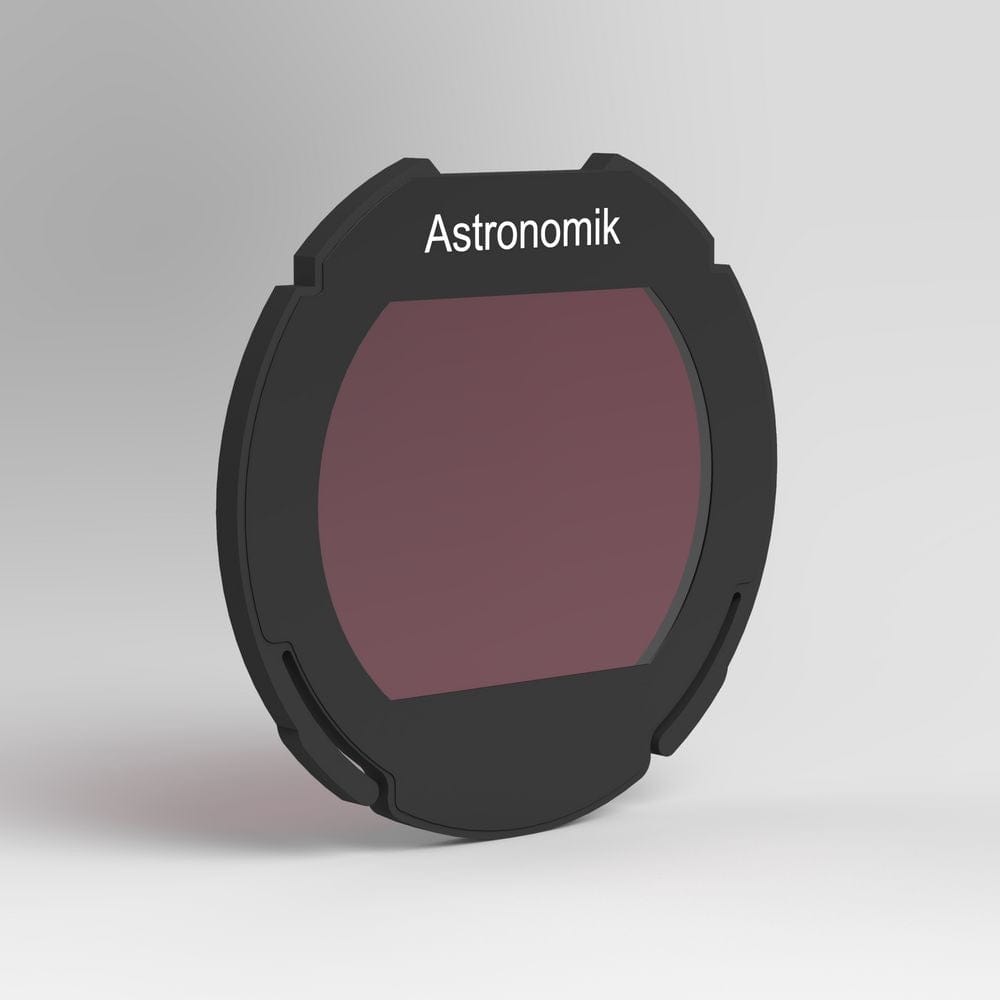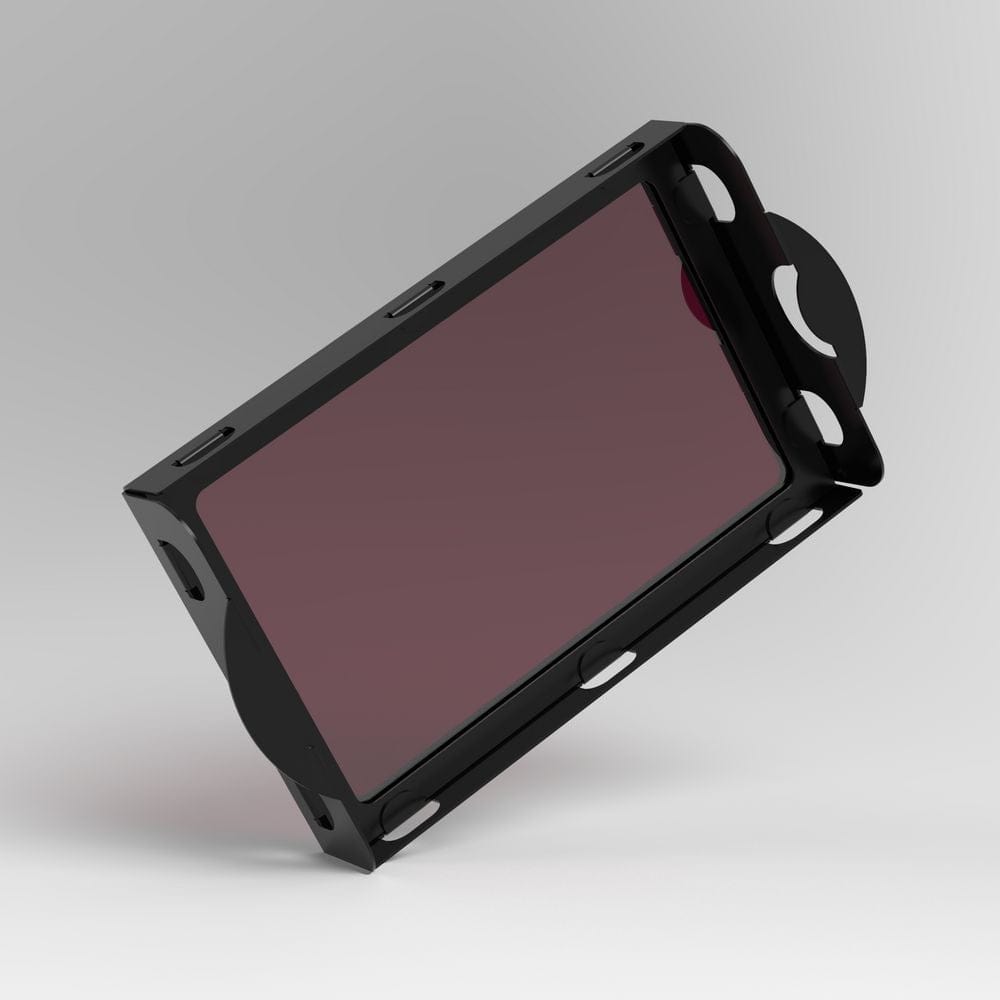Description
MaxFR Astronomik photographic narrowband-emission line filters for fast optical systems
There is an ever growing demand for filters suitable for extremely fast optical systems like Celestron´s RASA the Epsilon Astrographs made by Takahashi.Our novel MaxFR emission line filters are suitable up to very fast focal ratios. The new Astronomik MaxFR series of narrowband-emission line filters is perfect matched to the requirements of astronomical deep-sky imaging with fast optical systems. For the three most important emission lines of oxygen (OIII), hydrogen (H-alpha) and sulfur (SII) you may select your filters either with 12nm or 6nm Bandwidth (FWHM).
|
MaxFR OIII-CCD filter 6nm and 12nm FWHM |
MaxFR H-alpha-CCD filter 6nm and 12nm FWHM |
MaxFR SIII-CCD filter 6nm and 12nm FWHM |
Highest transmission:
Our new MaxFR filters are made in a completely new way, designed to work perfectly with fast optical systems. The built-in well known MFR Coating technique gives you the best out-of-band blocking possible across the entire range of wavelengths from the UV up to IR! Your advantage of our new design is a extremely high contrast, minimized stray light, no halos and needle-sharp stars. The Astronomik MFR narrowband-emission line filters give you the best quality of data: The best start material to be processed to a awesome final image!
- For 12nm MaxFR filters this means a unlimited usability from f/1.7 to f/8 and about 85% of the maximum transmission at a f/1:1.4 as guaranteed.
- For 6nm MaxFR filters this means a unlimited usability from f/2.2 to f/8 with about 90% of the maximum transmission at a f/2 as guaranteed performance data.
For maximum contrast the SII filter is carefully designed to block all light coming from H-alpha and NII (nitrogen).
Imaging with Narrowband-Emission line Filters
If you have to observe from light polluted sites (like most of us...), imaging with narrowband-emission line filters is the best way to take great images, as all kind of light pollution can be blocked very effective! Normally an H-alpha filter should be your first step into this amazing field of astrophotography! With an Narrowband H-alpha filter you will be able to take deep and contrast images even with very heavy light pollution or with the full moon high up in the sky!
If you look at other astro photos, an H-alpha is the best choice for all nebulas glowing red! An OIII filters expands your imaging possibilities, as you are able to image all greenish/blueish structures. Planetary nebulas and star forming regions are great targets! The SII filters completes your HSO-set of filters. With these three filters you are able to process your images like the ones from the Hubble space telescope!
Quality aspects of the new Astronomik MFR narrowband-emission line filters:
- MFR Coating: The 12nm Filters can be used on all instruments down to f/1.4, the 6nm filters down to f/2.
- High-Quality substrate: Astronomik filters are made with stress- and striae free, optically polished glass. The filter itself is made of ultra thin layers on this substrate!
- Parfocal filters: All Astronomik Filters are parfocal! Due to the very small thickness-tolerance the focal plane is not shifted when changing filters!
- Coating: Astronomik filters are made of up to 170 layers which are coated on both sides of the substrate. These layers form the filter itself and act as a Anti-Reflection Coating.
- Durability: Due to our coating technique all Astronomik filters are highly scratch resistant, not sensitive to moisture and do not degrade when getting older. Every Astronomik filter will deliver it´s full performance and meet the specs at the point of shipping even after lot´s of years.
- Integrated Blocking: All unwanted light is blocked in the whole spectral range from UV up to the IR! (You will not need an additional UV & IR-Blocker when imaging with any of our new narrowband-emission line filters with coating!)
- Wide range of available sizes from 1,25" up to square 50mm x 50mm filters.
- Delivered in a high-quality protection & storage box.
- Due to our outstanding coating technique we do offer a 10 year guarantee on all of our filters.
You get the highest quality possible with every single Astronomik filter to be able to take perfect images with your instruments! Especially the filters against light pollution and the narrowband-emission line filters will expand your imaging possibilities enormous! You are investing your money for an accessory which will work in lot´s of years in the same ways it did when it was brand new. Due to our special coating technique the filters do not degraded when getting older, and due to the new MFR coating you will be able to use the filter on nearly all instruments!
Which is the best full-width-half-maximum for me? 12nm or 6nm?
The question which full-width-half-maximum (FWHM) is the "best", shows up on in eMails on our monitor or when talking to customers at fairs very often. A general "right" or "wrong" or "best" does not make any sense. We would not offer both series if they were not needed.
If you have a camera with an extremely low dark current and effective cooling, the 6nm filters will give you major advantages: Due to the stronger blocking of the background you will be able to expose longer and get deeper images! All stars are very tiny points, most faint stars do not show up anymore! -This is a major advantage even for normal cameras, as you can take images of faint structures even in star-crowded regions of the Milky Way!
To put it short: 12nm Filters are the right choice for all DSLRs and dark-current limited cameras.
6nm filters are the best choice for observing sites with extreme strong light pollution, cameras with low dark-current and when weak objects require the maximum contrast and star-reduction possible!
